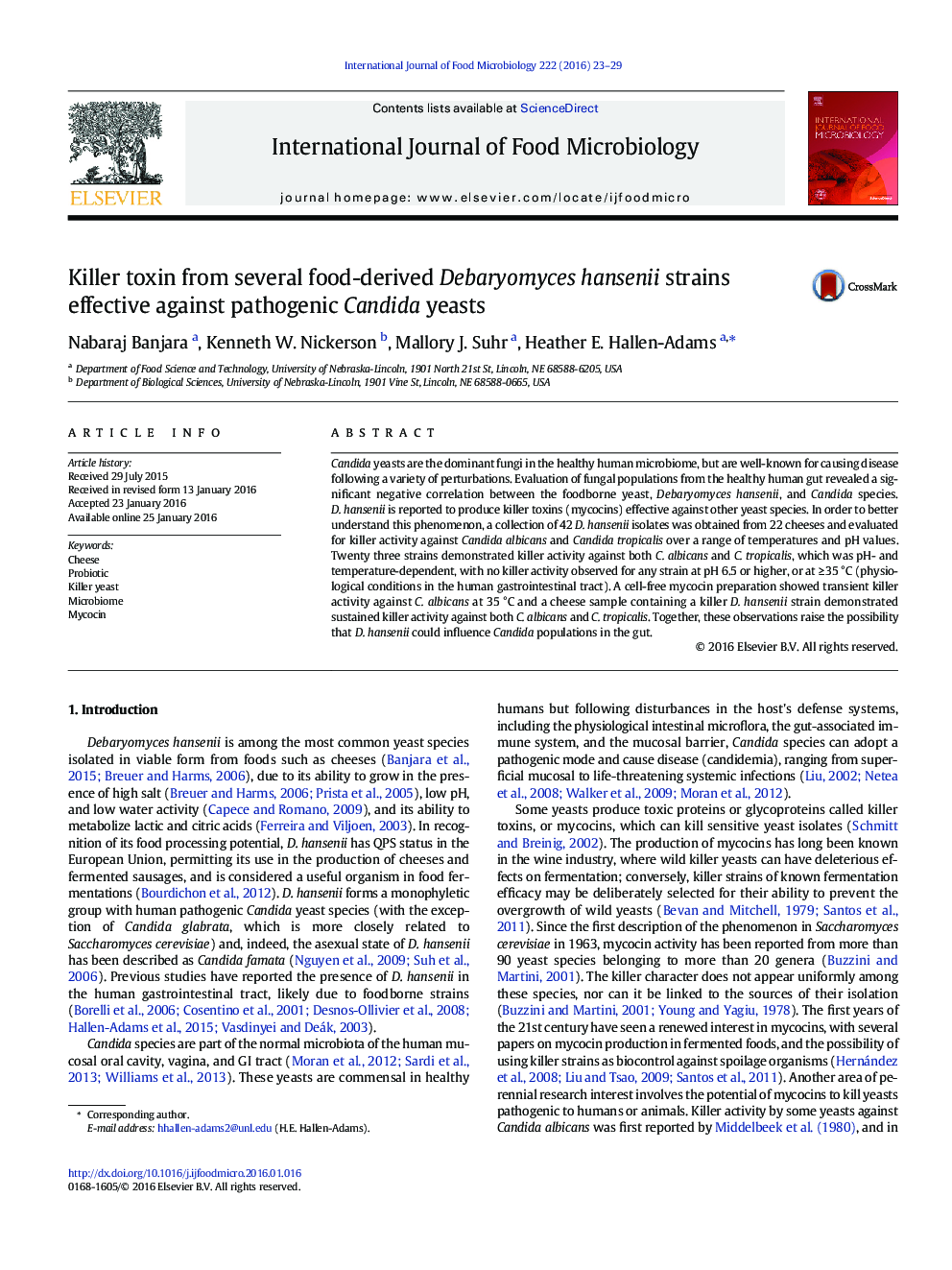| Article ID | Journal | Published Year | Pages | File Type |
|---|---|---|---|---|
| 4366350 | International Journal of Food Microbiology | 2016 | 7 Pages |
•Gut microbiome data show negative relation between foodborne and pathogenic yeasts.•Debaryomyces hansenii yeasts isolated from cheese killed pathogenic Candida yeasts.•Cheese with a killer strain killed Candida for many days at human body temperature.•D. hansenii merits further investigation for its anti-Candida activities.
Candida yeasts are the dominant fungi in the healthy human microbiome, but are well-known for causing disease following a variety of perturbations. Evaluation of fungal populations from the healthy human gut revealed a significant negative correlation between the foodborne yeast, Debaryomyces hansenii, and Candida species. D. hansenii is reported to produce killer toxins (mycocins) effective against other yeast species. In order to better understand this phenomenon, a collection of 42 D. hansenii isolates was obtained from 22 cheeses and evaluated for killer activity against Candida albicans and Candida tropicalis over a range of temperatures and pH values. Twenty three strains demonstrated killer activity against both C. albicans and C. tropicalis, which was pH- and temperature-dependent, with no killer activity observed for any strain at pH 6.5 or higher, or at ≥ 35 °C (physiological conditions in the human gastrointestinal tract). A cell-free mycocin preparation showed transient killer activity against C. albicans at 35 °C and a cheese sample containing a killer D. hansenii strain demonstrated sustained killer activity against both C. albicans and C. tropicalis. Together, these observations raise the possibility that D. hansenii could influence Candida populations in the gut.
